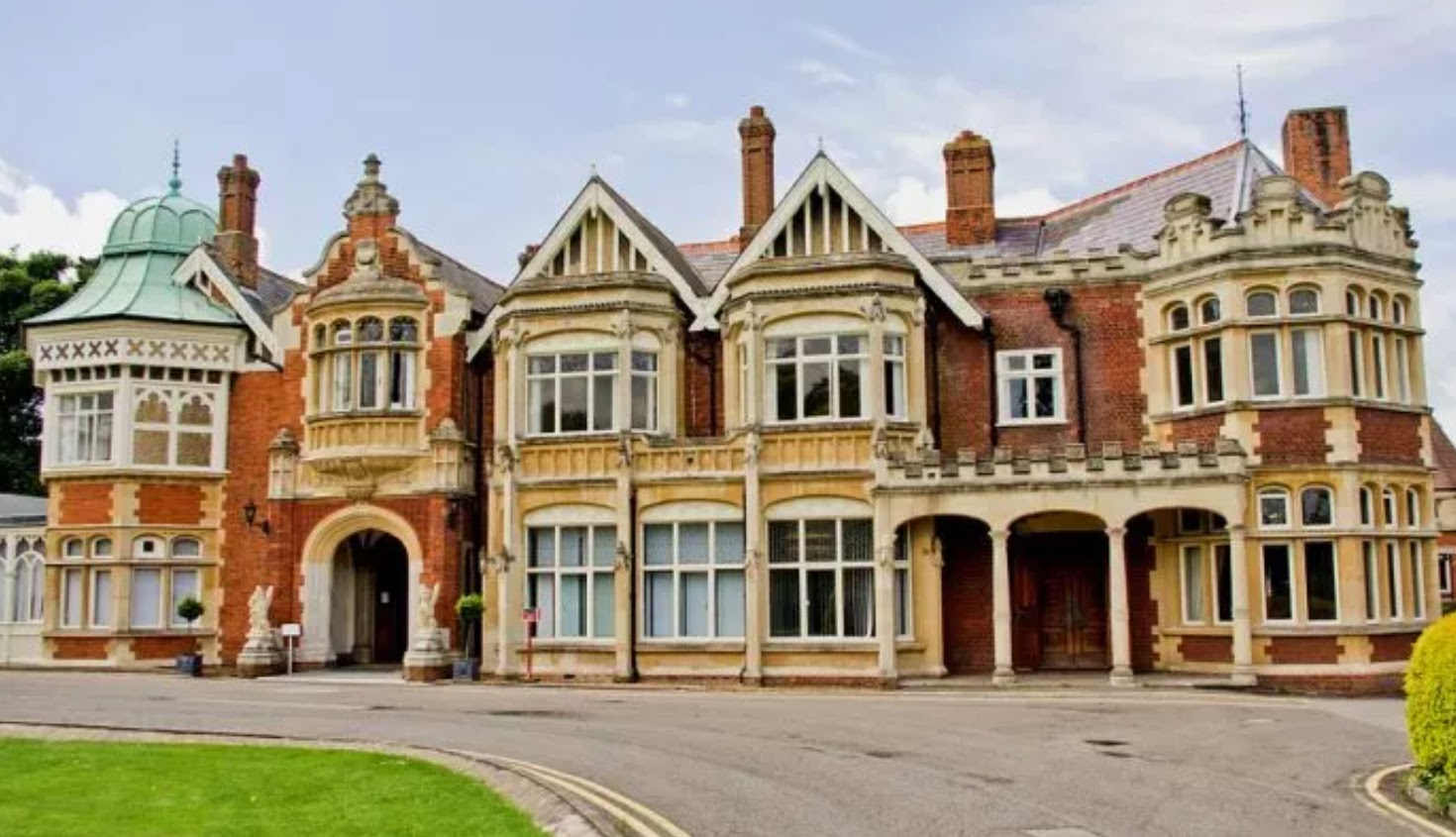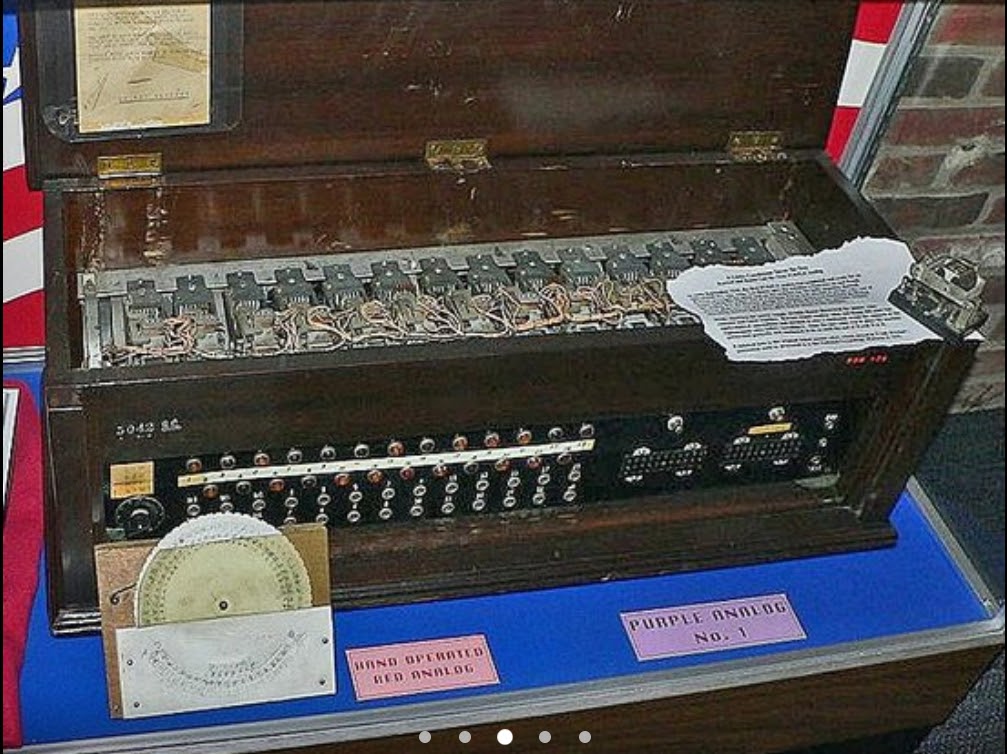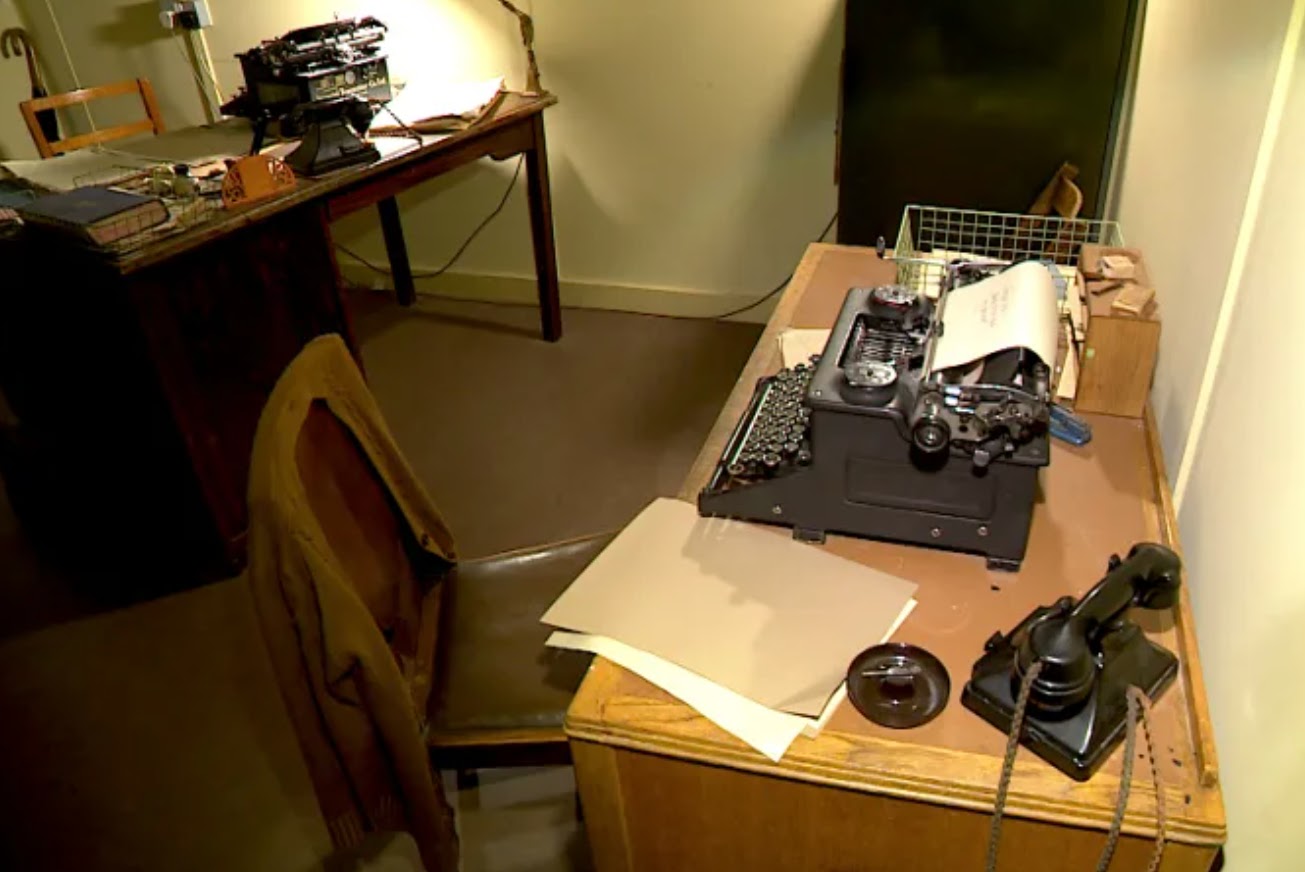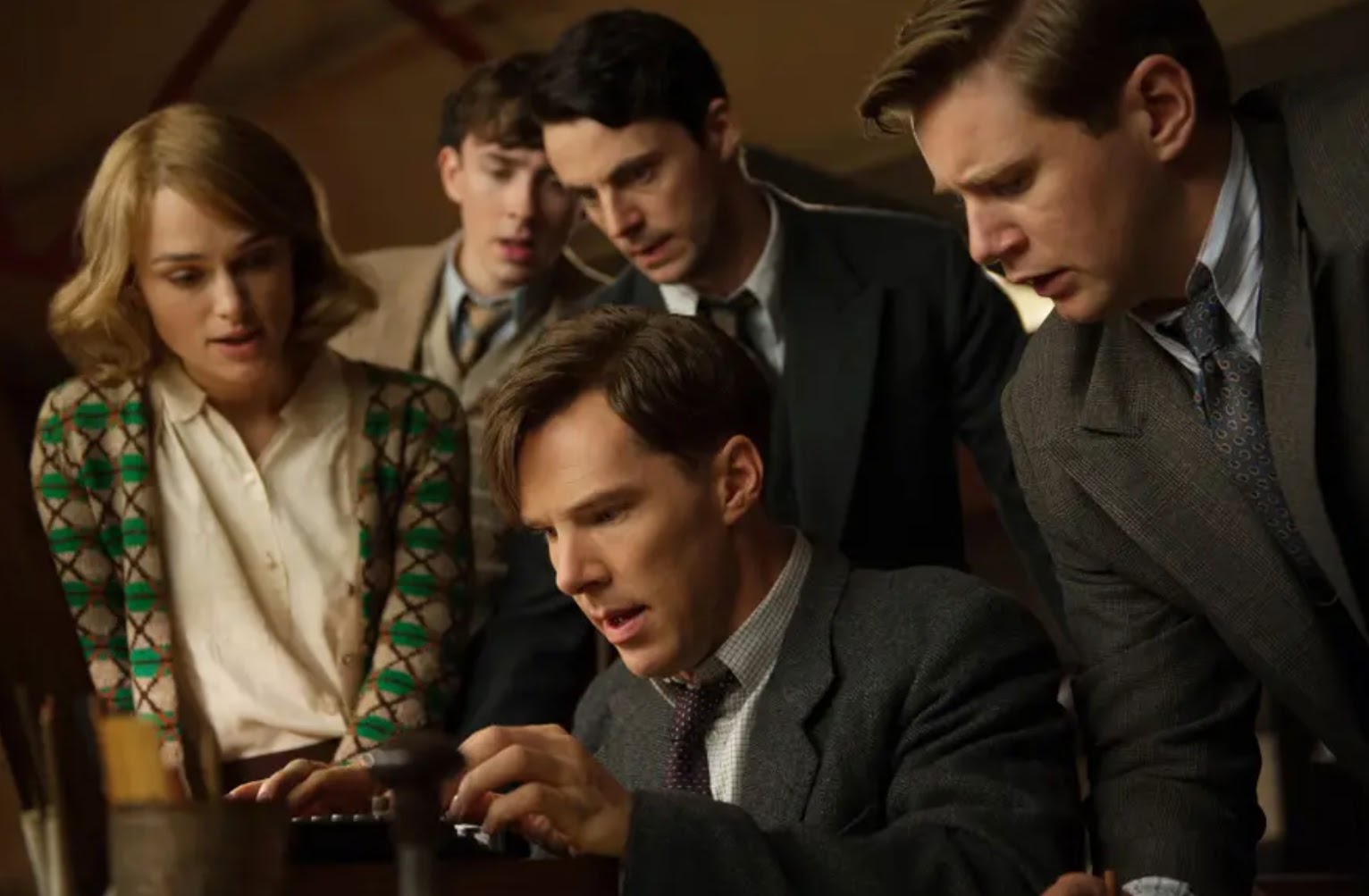Bletchley Park: The Top-Secret US Mission to Crack the Enigma Code
Listen to the podcast A History of the World in Spy Objects - James Grime: Engima Machine
It was cold, wet, and dark by the time America’s top-secret ‘Sinkov Mission’ arrived at Bletchley Park, Britain’s wartime code-breaking center north of London. It was midnight in early February 1941 and the black-out curtains made Bletchley Park seem even darker.
Alastair Denniston, the British head of the Government Code & Cypher School, was waiting: ‘The Y’s are coming!’ Denniston had noted in his appointment diary.
Denniston’s assistant, Barbara Abernethy, had strict instructions: “There are going to be four Americans who are coming to see me at 12 o’clock tonight. I require you to come in with the sherry. You are not to tell anybody who they are or what they will be doing.”

The Bletchley Park Sinkov Mission
Abraham Sinkov, a math teacher from Brooklyn and later an Army cryptanalyst, led the US mission. The four-man team had boarded the British battleship HMS King George V off the coast of Annapolis, Maryland in January 1941 for a stormy, two-week voyage. They saw the tops of British merchant vessels sunk by the Germans in the North Sea. On the last leg of the journey, German pilots tried to bomb their ship, but the Luftwaffe narrowly missed - twice.
At Bletchley Park, the sound of German bombs would become a familiar backdrop to the mission. It was 10 months before Pearl Harbor - long before America officially entered World War II. The US team was sent to exchange cryptanalytic information with Britain that might help break the German enigma code protecting Nazi military communications. They were disguised as ‘Canadian diplomats’ with passports to match their legends - a cover Sinkov worried no one would believe.
Both the US and UK were circumspect. Denniston, their welcoming host, fully intended to withhold secrets, including the success Britain was having breaking German ciphers with Alan Turing’s ‘Bombe’ machine. The Americans didn’t trust the Brits either. The plan on both sides was to share intelligence and spy on each other for the next month or so. Let the games begin.

The US codebreakers
The US had sent two Army and two Navy officers to Bletchley. The services conducted cryptanalytic activities in isolation, rarely sharing methods or results even with other American intelligence agencies, according to the US National Security Agency (NSA). The joint US mission added an extra frisson to the trip - a bit of inter-agency spying might even be possible on the side.
Captain Abraham Sinkov, the team leader, was an expert in Italian and other cipher systems. Leo Rosen, much like British mathematician Alan Turing, was technically minded. Rosen had recreated a Japanese cipher machine (codename Purple) from paper descriptions, even though he’d never seen one. His invention allowed Americans to transpose Japanese ciphers into plain text, sometimes reading the Japanese diplomatic cables before the ambassador had even arrived at work.
.jpg)
The US Navy and Army codebreakers roll up their sleeves at Bletchley
The Navy sent Lieutenant Prescott Currier, a commissioned officer and former member of the ‘On the Roof Gang’ of radio operators trained in collection techniques involving the Japanese Navy. Robert H. Weeks (later Rear Admiral Weeks) had served on submarines and held Navy communications security posts in Washington.
The men were the first foreigners to visit Bletchley Park - even UK Prime Minister Winston Churchill didn’t visit until October 1941 - and the stakes were high. If the Americans were successful, the US would help defeat the Nazis. If they were discovered, it would give Hitler proof that America was fighting a secret war against the Reich. A German bombing campaign on US targets was likely to follow.
For the most part, the US army and navy teams kept to themselves. Sinkov later recalled that they were driven from their accommodation to Bletchley Park in separate cars and - despite having lunch and supper together - rarely mixed during the day or discussed what they did.

The Sinkov mission was aligned on one issue, however. Rosen had brought one of the few, precious Purple analog machines in existence to show British intelligence how to break Japanese diplomatic codes. It would prove to be the mission’s turning point.
“London had made a conscious decision not to disclose Bletchley Park’s success against the enigma, a choice which would have a dramatic impact on the Sinkov mission when it was reversed,” NSA historian David J. Sherman wrote in his record of the mission.
"The brand new social experience where you activate your gaming skills as you train like a spy."
- TimeOut
Take on thrilling, high-energy espionage challenges across different game zones.


Full disclosure
Weeks into the mission - with Denniston still lobbying to keep the Bombe machine secret from his American guests - Denniston’s superiors decided otherwise. It was a momentous decision, one that needed to be signed off by Churchill himself.
America wasn’t officially at war, so the US and UK weren’t technically allies. Yet the mission’s decision to bring the Purple cipher machine convinced the British that the Americans were dealing in good faith.
The US team signed security oaths and was allowed access to areas of Bletchley Park that they had not yet seen. They were finally invited to see the Bombe decryption machine developed by Turing and Gordon Welchman. Currier later described the breakthrough: “We were there for at least an hour or two, twice, and watched the entire operation… had all of the techniques explained in great detail.”
Rosen, who had built the Purple analog machine, seemed to have split from the team at this point and spent his time with Bletchley’s engineers. Rosen thought he could improve the Bombe through the introduction of electrical switches, and later incorporated them into American variants which he worked on back in the US.

A heroic return?
It was somewhat of a surprise then, that the Sinkov mission returned to debate over whether their mission was a success or not.
The US team had been given access to the ultra-secret Bombe and gained intelligence about how to break German ciphers. Unfortunately, they had an overview rather than the details of how the machine worked, and they weren’t given access to the deciphered German messages.
They also didn’t bring back a replica of the Bombe, as only a few had been produced at the time.
“We were given an introductory talk about the cryptanalysis of the Enigma system … It was essentially a preliminary discussion,” Sinkov recalled later. Yet, Sinkov still believed that the Bletchley Park experience saved American codebreakers two years of intense work on German and Italian cryptosystems.
Weeks had also brought back a sketch of the Bombe’s wiring which provided real insight into the machine’s operation.

The US-UK relationship
The trip led to further intelligence exchanges after the Japanese bombed Pearl Harbor in December 1941. Turing, who visited the US from November 1942 to March 1943, was a top-level link between the allies.
The US-UK relationship eventually grew into a formal agreement in 1946 between agencies that later became America's NSA and Britain's Government Communications Headquarters. Canada, Australia and New Zealand were also included in a group known as the ‘Five Eyes’, the longest standing - and at times most controversial - intelligence alliance in history.
SPYSCAPE+

Join now to get True Spies episodes early and ad-free every week, plus subscriber-only Debriefs and Q&As to bring you closer to your favorite spies and stories from the show. You’ll also get our exclusive series The Razumov Files and The Great James Bond Car Robbery!


Gadgets & Gifts
Explore a world of secrets together. Navigate through interactive exhibits and missions to discover your spy roles.
Your Spy Skills
We all have valuable spy skills - your mission is to discover yours. See if you have what it takes to be a secret agent, with our authentic spy skills evaluation* developed by a former Head of Training at British Intelligence. It's FREE so share & compare with friends now!
* Find more information about the scientific methods behind the evaluation here.


Stay Connected
Follow us for the latest
TIKTOK
INSTAGRAM
X
FACEBOOK
YOUTUBE